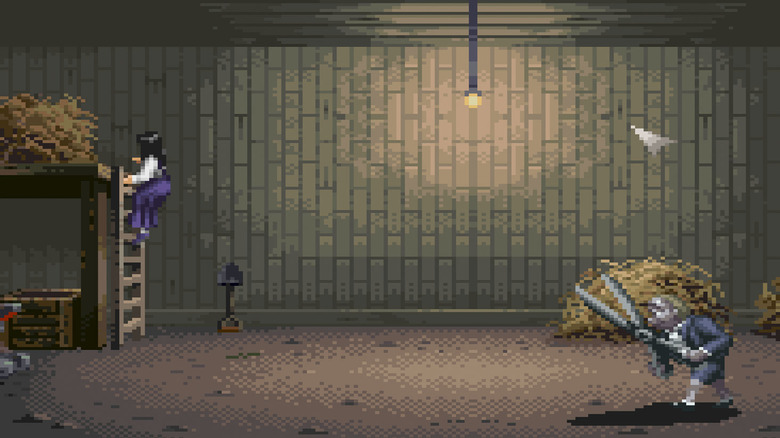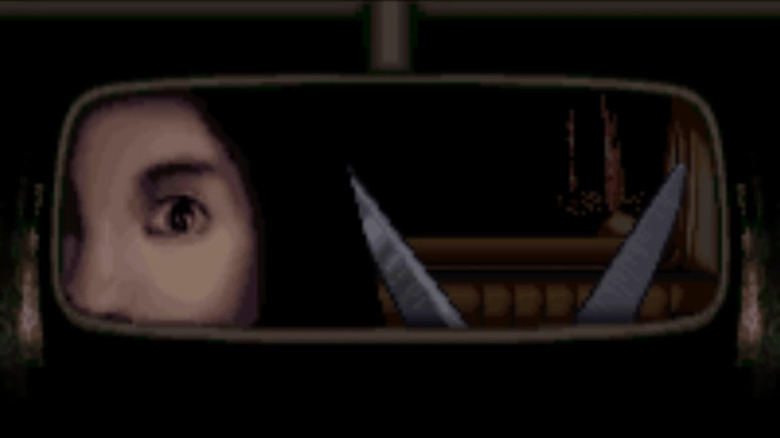The SNES Horror Game You Likely Never Played
The SNES had lots of classic games that are fondly remembered by older gamers and even enjoyed by younger fans of retro gaming. The console gave us some fantastic platformers, RPGs, and fighting games. One thing the SNES generally isn't remembered for, however, is horror games.
The graphical and performance limitations of the 90s console, perhaps, held it back in this regard, so Nintendo fans didn't get much horror on the SNES. None of the best horror games of all time were released on it, and there aren't any horror games that many would cite to justify buying the old console.
That doesn't mean, however, that there weren't any horror games developed for the SNES. Indeed, there's one SNES horror game that you likely never played, which is actually pretty scary and worth checking out. Despite its lack of high-res gore and its 2D side-scrolling gameplay, it manages to deliver some real terror and even predicted future tropes of the genre.
Clock Tower was early survival horror
"Clock Tower” was originally released for the Super Nintendo (Super Famicon in Japan) in 1995. It's not surprising few gamers have played — or even heard of — it as it was exclusively launched in Japan (per Destructoid). While the game spawned three sequels that saw releases in North America and Europe, these later titles departed from the original in terms of narrative and gameplay, and they received poor reviews compared to the original.
The ambitious horror game adopted many of the tropes and mechanics that would later come to be associated with the survival horror genre. Players find themselves in control of Jennifer, an orphan who, along with several other young girls, has been adopted by a mysterious benefactor and taken to a large, mysterious mansion. Once there, the power goes out, the other girls disappear, and Jennifer is left to explore the mansion to find her friends and, if she's lucky, an explanation for the strange things happening around her.
Jeniffer quickly discovers that she's not alone. She's being stalked by a small man wielding giant scissors as she makes her way through the large home. Known only as Scissorman, this strange antagonist can seemingly appear anywhere and cannot be killed. When he attacks, players are forced to flee and hide until he leaves, or find some other way to temporarily delay his attacks. The moments when he appears punctuate the tension that is built throughout the game as players explore and solve puzzles through traditional adventure gameplay.
Adventure game mechanics, horror narrative, and a branching story
When not running from Scissorman, players explore a surprisingly large area and engage in gameplay that should be familiar to anyone who played adventure games of the era. They will encounter puzzles and obstacles that must be overcome, often with the use of an item found somewhere in the area. The puzzles aren't particularly difficult but keeping one's bearings and figuring out where to go next while avoiding the game's antagonist is a real challenge. Even more impressive for a game of this era, the choices players make, and what they are able to discover, can lead to dramatically different outcomes.
Long before Supermassive Games' titles like "Dark Pictures: Little Hope," "Clock Tower" features multiple endings based on player choices. Indeed, players have the option of simply fleeing the mansion early on, leaving their missing friends to their fate, although this doesn't exactly end well for poor Jennifer. This level of freedom and variable outcomes gives the game incredible replay value and means that a lot of things have to be done to uncover all the secrets, reveal the whole plot, and get a positive ending.
While "Clock Tower" didn't get much attention outside of Japan when it was released, its effective story and impressive gameplay have earned it attention decades later from the likes of Kotaku and AV Club. It paved the way for future horror games that emphasized running and hiding over combat, branching narratives, and environmental storytelling. For all these reasons, it deserves a place of honor in the history of the genre and is worth checking out for any horror fans that can find a copy.



